ELEPHANT IN THE ROOM

With the upcoming inauguration of both a new Trump Administration and a new Washington State Governor in (WHY IN) Bob Ferguson, the housing and homelessness crisis in Washington State is set to collide with shifting federal policies. The stakes are higher than ever as cities like Seattle and Spokane grapple with visible homeless encampments, a lack of available housing for all income levels, and an increase in regulatory intervention. Will the incoming administrations’ policies address these challenges or exacerbate them? Will the federal and state governments work in harmony or clash over ideological divides? To see into the future, let’s first look into the past to assess whether previous strategies have worked for Washington State.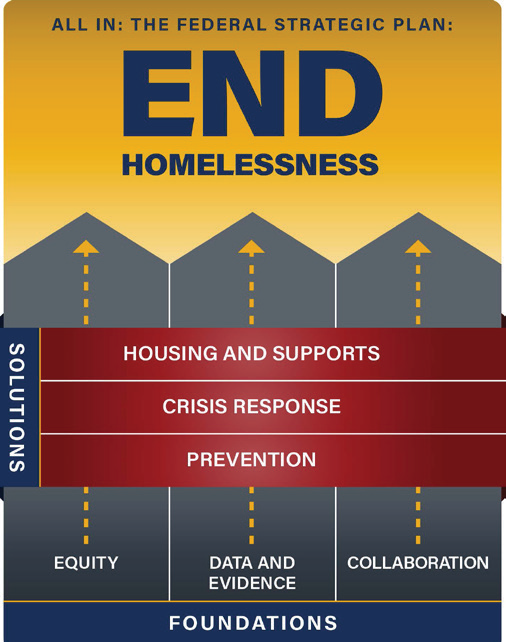
USICH AND THE ALL IN STRATEGY
The U.S. Interagency Council on Homelessness (USICH) is the federal agency tasked with uniting 19 different government departments and programs to coordinate efforts to end homelessness. Often described as the "strategic brain" behind federal homelessness policy, USICH works in tandem with Housing and Urban Development (HUD) to set priorities and strategies.
Its flagship initiative, the All In Strategy, was the Biden-Harris Administration’s Federal Strategic Plan to reduce homelessness by 25 percent by January 2025. This plan is built around three foundational pillars—equity, data, and collaboration—and three solution pillars—housing and supports, homelessness response, and prevention. 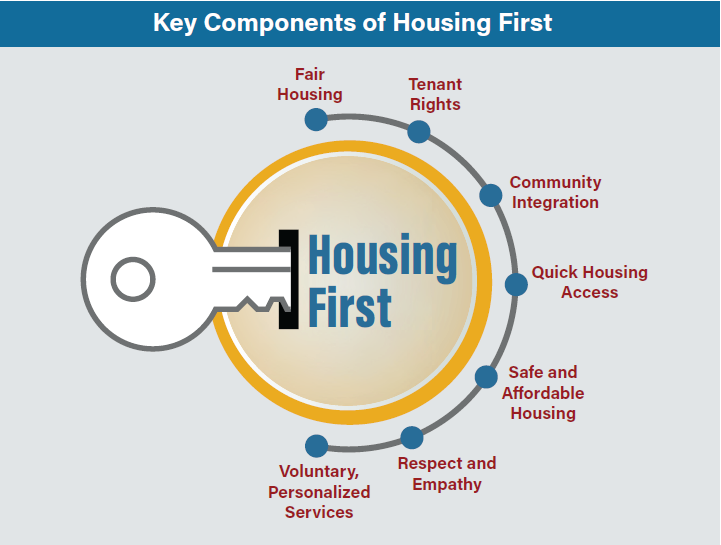 One notable goal of the All In Strategy was to expand programs focused on preventing evictions, including legal services, advocacy, and housing counseling. The implementation of this plan relied heavily on the Housing First approach, which prioritizes providing housing as a foundation for addressing other issues like health and employment.
One notable goal of the All In Strategy was to expand programs focused on preventing evictions, including legal services, advocacy, and housing counseling. The implementation of this plan relied heavily on the Housing First approach, which prioritizes providing housing as a foundation for addressing other issues like health and employment.
However, USICH has struggled to translate these high-level goals into tangible results. This failure leaves local jurisdictions to grapple with the realities on the ground without sufficient tools or support. This has significant implications for Washington State, as USICH’s guidance and strategy play a critical role in determining federal funding allocations for local homelessness and affordable housing initiatives.
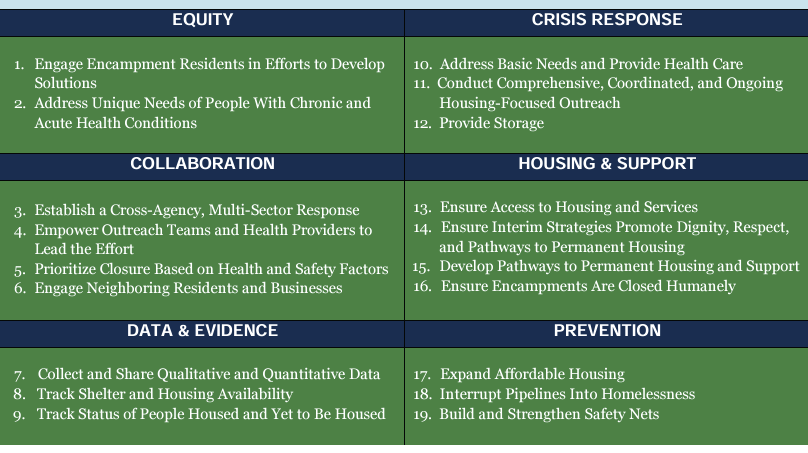
ENCAMPMENT RESPONSE: A CASE STUDY IN WASHINGTON STATE
USICH’s strategy on humane encampment closures and service referrals has faced significant challenges in Washington State. 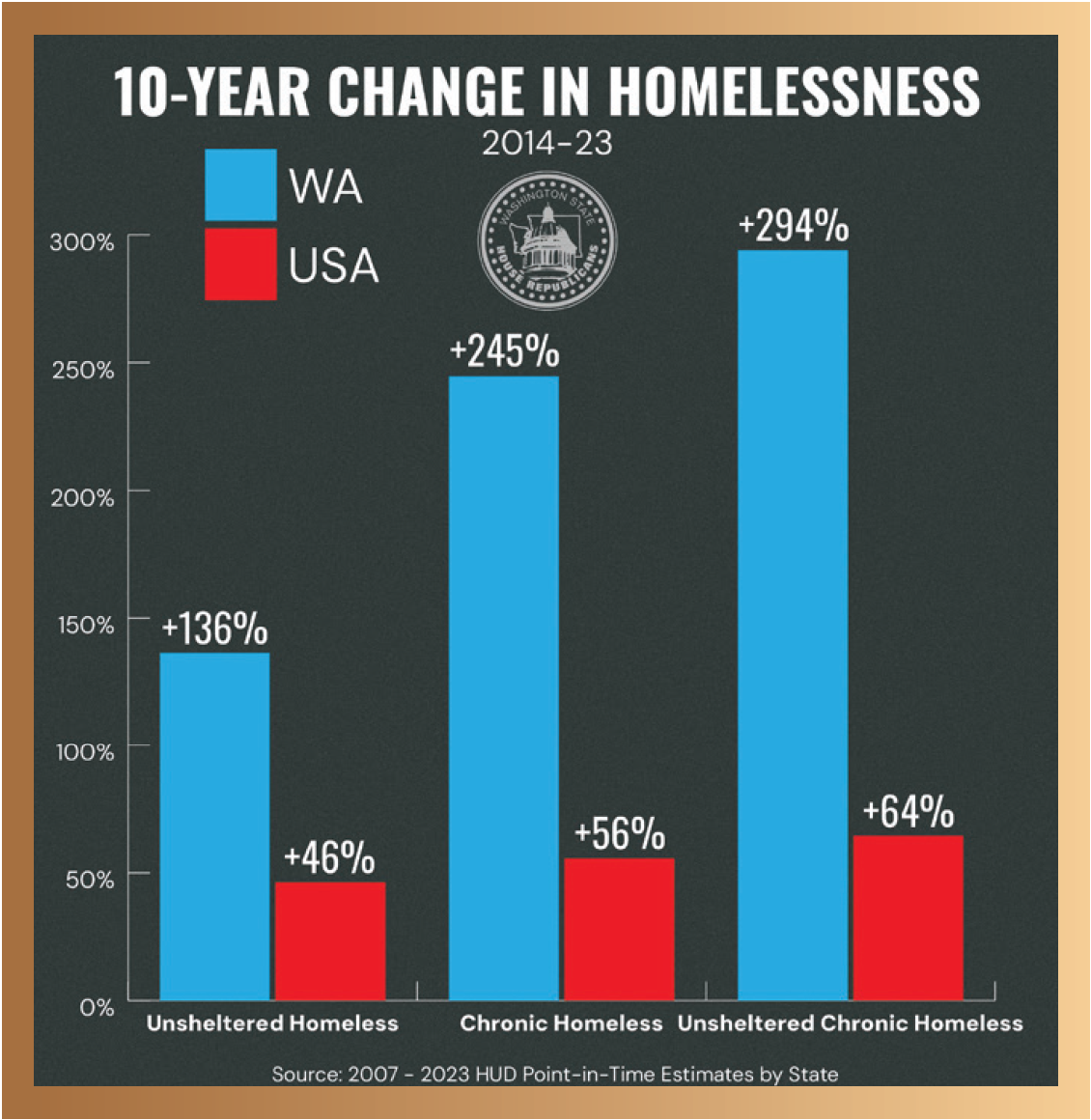
Encampments in Seattle remain symbols of both personal and systemic failures, while Spokane’s now-closed "Camp Hope" demonstrates the complexities of addressing homelessness at scale, especially when homelessness is used for political gain by bureaucrats. Residents often resist shelters due to barriers like sobriety requirements. What many also don’t know is that some residents of these encampments are paid by the government to serve as Peer Navigators, leveraging their lived experience to assist others. However, this arrangement underscores broader systemic issues. When individuals are financially incentivized to remain within encampments, it can contribute to resistance against transitioning into shelters or permanent housing, further entrenching the cycle of homelessness.
Adding to the urgency is the stark increase in homelessness over the past decade. A recent analysis shows Washington State experiencing a 136% rise in unsheltered homelessness compared to a national average of 46%, with chronic homelessness increasing by 245% in the state compared to 56% nationally, and Unsheltered Chronic Homelessness rising 294% in the state compared to 64% nationally.
Local governments bear the brunt of public frustration, yet their reliance on short-term fixes perpetuates a doom loop in our cities. The Rights of Way Safety Initiative, which was enacted by the now former Inslee Administration, and allocated over $140 million to house only 265 individuals at the time, is a glaring example of inefficiency. This program later evolved into the Encampment Resolution Program, yet funding levels and efficacy data remain unclear. Despite these issues, WA State legislators will likely push for more funding without providing transparent or measurable results. Programs like these mirror USICH’s Housing First approach but lack the performance-based accountability needed to make meaningful progress.
SPOTLIGHT ON HUD AND THE PIT COUNT
What is the PIT Count?
Every January, the Point-in-Time (PIT) Count provides a snapshot of homelessness in the United States. Mandated by HUD, this annual census influences federal funding allocations for local Continuums of Care (CoCs). Critics argue that the PIT Count underestimates homelessness by excluding individuals in unstable housing situations, like couch-surfing, and relies on self-reported surveys collected by volunteers. This creates a disconnect between reported numbers and the visible prevalence of homelessness.
The Role of HUD
HUD oversees critical programs shaping housing policy nationwide, including:
- Homelessness Assistance: Funding shelters, outreach, and permanent supportive housing through programs like the Continuum of Care.
- Affordable Housing: Providing low-income families with Housing Choice Vouchers (Section 8).
- Fair Housing Enforcement: Ensuring compliance with the Fair Housing Act.
- Community Development: Revitalizing neighborhoods through block grants.
Donald Trump’s appointment of Scott Turner, a former NFL player, developer, and Opportunity Zone advocate, as HUD Secretary signals a likely focus on construction and deregulation. This marks a stark contrast from past strategies, aligning with Trump’s own experience as a developer and landlord.
Building more housing and reducing red tape could become central to federal housing policy under this administration.
Washington’s dire housing shortage, with the lowest number of housing units per household in the nation, underscores the urgency. State leaders must align with federal incentives to build housing, as any move toward rent control could dissuade developers from investing in Washington altogether.
The question remains: while HUD has the potential to reshape housing policy under this new leadership, can a federal agency with deep bureaucratic inertia deliver results quickly enough? This is where the newly proposed Department of Government Efficiency (DOGE) could play a transformative role, bringing a fresh approach to an issue that has long resisted traditional solutions.
DOGE AND THE PROMISE OF INNOVATION
The Department of Government Efficiency (DOGE), chaired by Elon Musk and Vivek Ramaswamy, offers the potential to disrupt entrenched housing challenges with innovative solutions. While DOGE has yet to release concrete plans, I have outlined several recommended interventions that could address the housing crisis in Washington State and beyond:
- Modular Housing: Deploying cost-effective, factory-built units to address shortages while reducing zoning and regulatory barriers.
-
Social Impact Bonds: Tying private investments to measurable outcomes, such as reducing unsheltered homelessness.
-
Data-Driven Decision-Making: Leveraging AI for transparency, efficiency, and evidence-based policy. However, the DOJ's scrutiny of AI in rental housing, including the RealPage lawsuit, highlights the delicate balance needed to adopt these tools ethically.
-
Releasing Fannie Mae and Freddie Mac from Conservatorship: Enabling greater private-market participation in housing finance.
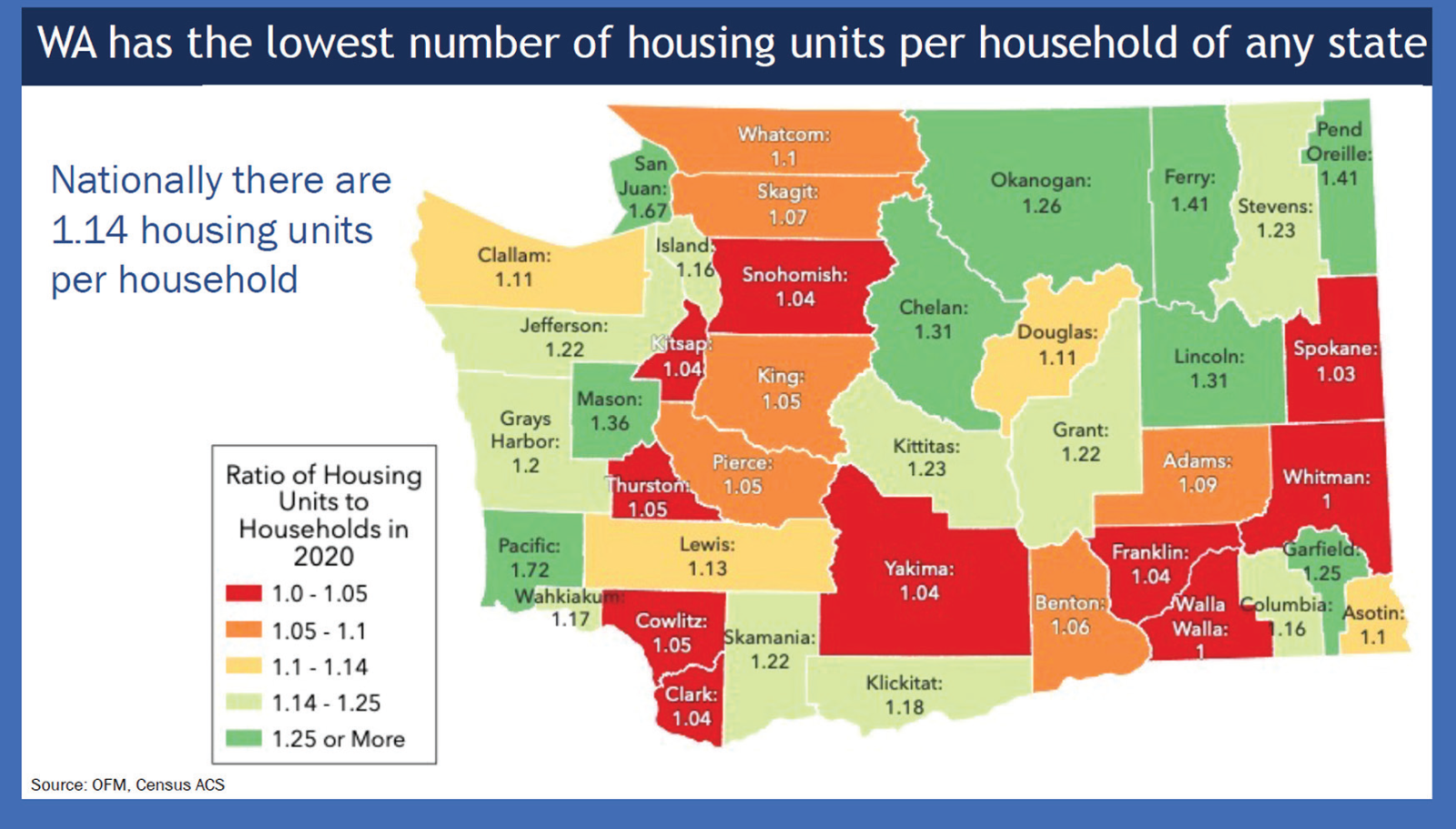
DOGE must also tackle systemic inefficiencies. Government agencies often prioritize managing homelessness over solving it, while politicians exploit the crisis for political gain without delivering meaningful results. Breaking these dynamics requires accountability and measurable progress, both of which DOGE could champion with a focus on innovation.
THE ELEPHANT IN THE ROOM
Donald Trump’s experience as a developer and rental housing provider signals a likely focus on building more housing and reducing red tape, a dramatic shift from the strategies of the past. With Scott Turner, a developer himself, leading HUD, the administration is poised to prioritize construction and deregulation. This could bring much-needed innovation and investment to states like Washington. However, the question remains: Will state and federal leaders seize this opportunity to work together, or will ideological divides block progress?
Washington State legislators face a critical decision: will they continue policies that perpetuate failure, or will they embrace a new path? The financial incentives within the homelessness response system, often referred to as the homeless industrial complex, are fundamentally misaligned with solving the crisis. Programs are often structured to maintain funding streams rather than deliver meaningful outcomes. Passing rent control as a reaction to rising rents and homelessness isn’t a solution; it’s a distraction that drives developers and investors away, compounding the crisis. Rising rents are due to housing unavailability and lack of new construction, simply put, supply and demand. Two of the largest drivers of housing costs today are the cost of capital and operational expenses, both of which are rapidly increasing. These economic realities make rent control a death sentence for new construction, perpetuating the very crisis it aims to solve.
Governor Bob Ferguson, in his first term, has a unique opportunity to demonstrate true leadership and unite the state around effective solutions. Leadership means rejecting policies that stifle growth, championing housing construction, and fostering collaboration between private and public stakeholders. With fresh leadership at the federal and state levels, Washington stands at a crossroads. Incentives explain outcomes. To change the trajectory, Washington must reject policies that deter growth and instead foster collaboration with builders and rental housing providers. These providers are not just stakeholders; they are the backbone of Washington’s housing market. By creating an environment that empowers them, Washington can attract the investment and innovation needed to tackle its housing challenges head-on.
The elephant in the room isn’t just the new federal administration; it’s the entrenched homeless industrial complex and the incentives that sustain it. Ignoring this reality ensures failure. Confronting it creates the possibility for lasting change. The time to act is now. Governor Ferguson’s legacy and Washington’s future hinge on bold leadership, efficient governance, meaningful collaboration, and relentless innovation.

